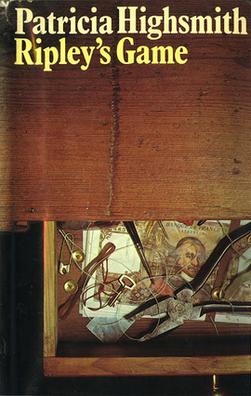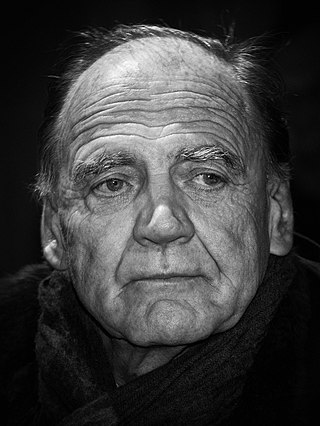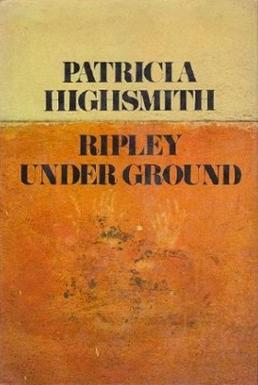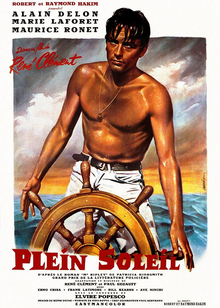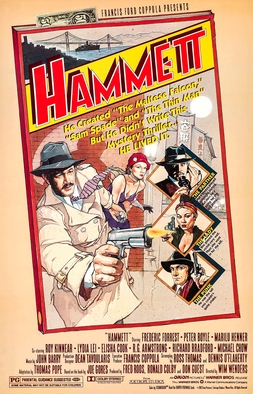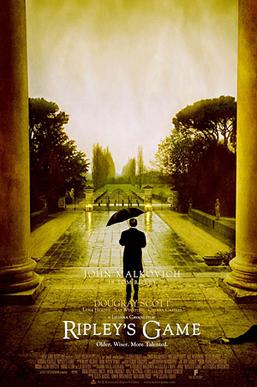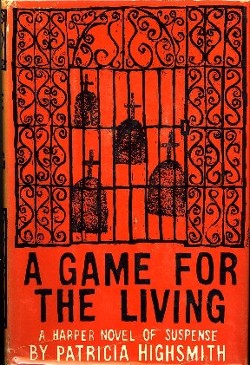Plot
Tom Ripley is a wealthy American living in Hamburg, Germany. He is involved in an artwork forgery scheme, in which he appears at auctions to drive up the price of supposedly newly-found—but really newly-produced—paintings by an artist who has faked his own death. At one of these auctions, he is introduced to Jonathan Zimmermann, a picture framer who is dying of leukemia. Zimmermann refuses to shake Ripley's hand, when introduced, coldly saying, "I've heard of you,” before walking away.
Raoul Minot, a French criminal, asks Ripley to murder an American gangster. Ripley declines, but, to get even for Zimmermann's slight, suggests Minot use Zimmermann for the job. Ripley spreads rumors that Zimmermann's illness has suddenly worsened, and Minot offers Zimmermann a great deal of money to kill the gangster. Zimmermann initially turns Minot down, but he becomes greatly distressed by the thought that he might not have long to live, so he agrees to go to France, with Minot, to get a second medical opinion. Minot arranges to have the results falsified to make Zimmermann expect the worst, and Zimmermann agrees to shoot the gangster in a Paris Métro station to provide for his wife, Marianne, and son, Daniel. Ripley visits Zimmermann in his shop, before and after the shooting, to get a picture framed. Zimmermann is unaware of Ripley's involvement in the murder plot, and the two begin to form a bond, after Zimmermann apologizes for being rude to Ripley, when they first met.
Minot visits Ripley, again, to report his satisfaction with Zimmermann's performance. Ripley, who has grown to like Zimmermann, is appalled, when Minot explains that, to start a gang war among his rivals, he plans to have Zimmermann murder another American gangster. This time, however, he will be on a speeding train, using a garrote. This gangster gets the jump on Zimmermann, but Ripley appears out of the shadows and overpowers the man. Zimmermann and Ripley execute both the target and his bodyguard, and together, they throw the bodies from the train. Back in Hamburg, Ripley confesses to suggesting Zimmermann to Minot, and he declines, when Zimmermann offers him the money for the second hit, asking Zimmermann to tell Minot that the job on the train was done alone.
Leading a double life causes tension in Zimmermann's marriage, as Marianne does not believe his stories of traveling and being paid for experimental treatments. He comes home, one day, to discover Marianne has taken Daniel and left, and he suffers an attack and collapses. Minot arrives to find out if Zimmermann knows why his flat was recently bombed, and, after Zimmermann mentions that "we" killed the man on the train, leaves, suspecting Ripley has turned on him.
Zimmermann calls Ripley, who takes Zimmermann to his mansion to wait for the assassins that he expects will soon appear. He and Zimmermann ambush and kill the American gangsters that arrive, and, in the chaos, Minot, who has been captured and beaten by the Americans, escapes. Ripley piles the bodies into the ambulance the gangsters brought, but before he and Zimmermann can leave, to dispose of them, Marianne arrives and tells Zimmermann that the French medical reports are fake. Ripley says there will be plenty of time to settle everything later, but he and Zimmermann could use her help with their current situation. The trio head to the sea, Ripley in the ambulance, and Marianne driving her exhausted husband in their car. On an isolated beach, Ripley douses the ambulance with gasoline and sets it on fire. Zimmermann gets in the driver's seat of his car and speeds away, with Marianne, abandoning Ripley. Moments later, he dies at the wheel and the car goes out of control, but Marianne pulls the emergency brake and survives. At the beach, Ripley says to himself, "Oh well. We made it anyway, Jonathan. Be careful."
Production
Wenders was a fan of Patricia Highsmith and wanted to make a film based on one of her novels, especially The Cry of the Owl or The Tremor of Forgery . When he learned that the rights to these novels, and Highsmith's others, had been sold, he met with the author, and she offered him the unpublished manuscript of Ripley's Game , which was published in 1974. [2] [3] Although he did not have the rights to do so, Wenders also incorporated elements from the previous Ripley novel, Ripley Under Ground , in the film.
Disliking the title Ripley's Game, Wenders shot the film under the title Framed. [2] Another title considered was Rule Without Exception. Wenders credits Hopper's performance and onscreen relationship with Ganz with inspiring the title The American Friend. [2] [3]
Initially, Wenders wanted to cast John Cassavetes as Ripley, but he declined, suggesting Hopper for the part. After casting Hopper, an experienced director, Wenders decided to cast all of the gangster roles with directors, including Gérard Blain, Samuel Fuller, Peter Lilienthal, and Daniel Schmid. Additionally, Nicholas Ray was cast as the artist, and Jean Eustache was cast as a friendly Frenchman.
American popular music is heard or referenced at several points in the film. Ripley quotes the song "Ballad of Easy Rider" from Easy Rider (1969), a film Hopper directed and starred in, and Bob Dylan's "One More Cup of Coffee" and "I Pity the Poor Immigrant". Zimmermann plays or sings the songs "Too Much on My Mind" and "Nothin' in the World Can Stop Me Worryin' 'Bout That Girl", both by the Kinks, in his shop; Summer in the City (1970), Wenders's first full-length feature film, was dedicated to the Kinks. Also, Ripley tells Zimmermann that he is "bringing the Beatles back to Hamburg," and Zimmermann quotes the band's song "Drive My Car" later in the film.
Reception
On review aggregator website Rotten Tomatoes, 88% of 25 critics' reviews of the film are positive, with an average score of 7.3/10; the site's "critics consensus: reads: "The American Friend is a slow burning existential thriller that does justice to the Patricia Highsmith source novel." [4] Roger Ebert gave the film three stars out of four, writing: "[Wenders] challenges us to admit that we watch (and read) thrillers as much for atmosphere as for plot. And then he gives us so much atmosphere we're almost swimming in it." [5] David Nusair of Reel Film Reviews had a more mixed reaction, calling the film "occasionally thrilling" and praising "Ganz's subtle, thoroughly compelling performance", but criticizing what he called a "disastrous final half hour." [6]
In A Girl and a Gun: The Complete Guide to Film Noir, David N. Meyer says of the film: "Though the plot may not make a whole lot of sense the first time around—and the thick European accents of a couple of the major actors doesn't help—The American Friend is worth the effort. Few movies from any era or genre offer such rich characters, realistic human relationships, gripping action sequences, or sly humor." [7] In Out of the Past: Adventures in Film Noir, Barry Gifford writes: "Of all the 'homage' films made since the 1940s and '50s meant to evoke noir, The American Friend succeeds more than most because of the spaces, the sputters, and sudden shifts of energy that allow the characters to achieve veracity." [8]
Highsmith initially disliked the film, but later changed her mind. [3] Joan Schenkar's biography of the author, The Talented Miss Highsmith: The Secret Life and Serious Art of Patricia Highsmith, quotes Wenders as saying: "I was really happy with the picture and couldn't wait to have Patricia see it. But then, to my great disappointment, she was quite disturbed by it, didn't conceal that either and didn't have anything good to say about it after the screening. I left utterly frustrated. Months later, I got a letter from her. She said she had seen the film a second time, this time in a public screening on the Champs-Élysées during a visit in Paris. And she had much better feelings about it now. ... And she was full of praise for Dennis Hopper, too, whom she had flat-out rejected the first time. She now wrote that my film had captured the essence of that Ripley character better than any other films. You can guess how relieved I was!" [9] In an interview in 1988, Highsmith praised the film's "stylishness" and said the scenes on the train were "terrific." [10]
The film was entered into the 1977 Cannes Film Festival. [11] It was selected as the West German entry for Best Foreign Language Film at the 50th Academy Awards, but was not chosen as one of the five final nominees. [12] The film was also nominated for Best Foreign Language Film by the U.S. National Board of Review. [13]



